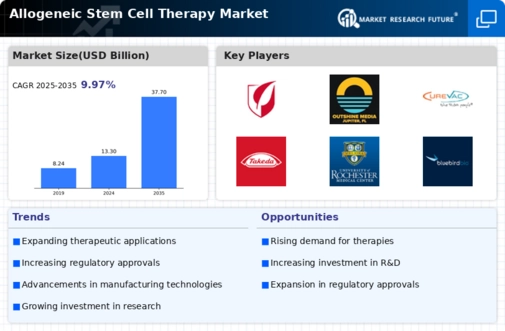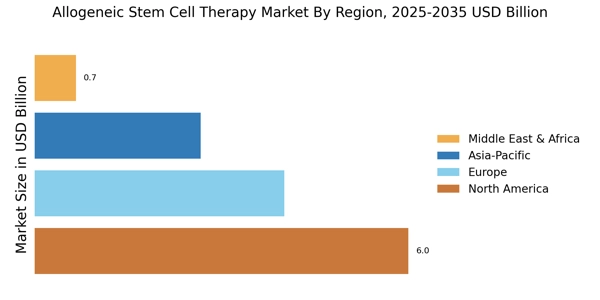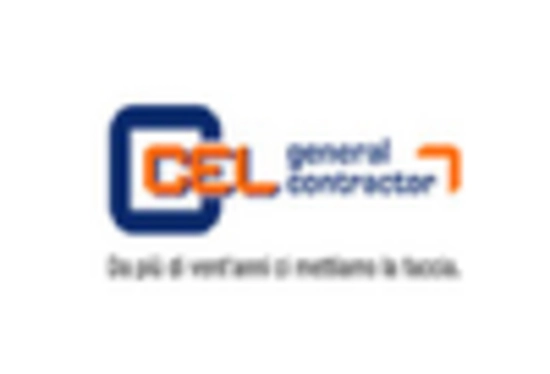Regulatory Support and Frameworks
The establishment of supportive regulatory frameworks is fostering growth in the Allogeneic Stem Cell Therapy Market. Regulatory bodies are increasingly recognizing the therapeutic potential of stem cell therapies and are streamlining approval processes to facilitate faster access to innovative treatments. For example, the introduction of expedited pathways for regenerative medicine products has encouraged companies to invest in allogeneic therapies. This regulatory support not only enhances patient access to cutting-edge treatments but also instills confidence among investors and stakeholders. As regulatory environments continue to evolve favorably, the Allogeneic Stem Cell Therapy Market is poised for substantial growth.
Advancements in Stem Cell Research
Recent advancements in stem cell research are significantly influencing the Allogeneic Stem Cell Therapy Market. Innovations in cell processing, storage, and transplantation techniques have improved the efficacy and safety of allogeneic therapies. For instance, the development of more efficient cell expansion methods has increased the availability of stem cells for therapeutic use. Furthermore, the integration of gene editing technologies, such as CRISPR, is opening new avenues for treating genetic disorders through allogeneic stem cell applications. These advancements not only enhance treatment outcomes but also attract funding and support from various stakeholders, thereby driving growth in the Allogeneic Stem Cell Therapy Market.
Increasing Prevalence of Chronic Diseases
The rising incidence of chronic diseases such as cancer, diabetes, and autoimmune disorders is a primary driver for the Allogeneic Stem Cell Therapy Market. As these conditions become more prevalent, the demand for innovative treatment options escalates. According to recent data, chronic diseases account for approximately 70% of all deaths worldwide, highlighting the urgent need for effective therapies. Allogeneic stem cell therapy offers a promising solution, as it can potentially provide long-term remission and improve quality of life for patients. This growing patient population is likely to propel investments in research and development, further enhancing the Allogeneic Stem Cell Therapy Market.
Growing Investment in Regenerative Medicine
The surge in investment within the regenerative medicine sector is a crucial factor propelling the Allogeneic Stem Cell Therapy Market. Venture capital and private equity firms are increasingly funding companies focused on stem cell therapies, recognizing their potential to revolutionize treatment paradigms. In recent years, investments in regenerative medicine have reached billions of dollars, indicating strong market confidence. This influx of capital is likely to accelerate the development of allogeneic therapies, leading to more clinical trials and eventual commercialization. As a result, the Allogeneic Stem Cell Therapy Market is expected to expand rapidly, driven by innovative product offerings and enhanced patient access.
Rising Awareness and Acceptance of Stem Cell Therapies
The increasing awareness and acceptance of stem cell therapies among healthcare professionals and patients are driving the Allogeneic Stem Cell Therapy Market. Educational initiatives and outreach programs are effectively disseminating information about the benefits and potential of allogeneic therapies. As patients become more informed about their treatment options, they are more likely to seek out these innovative therapies. Additionally, endorsements from key opinion leaders and successful case studies are further legitimizing the use of allogeneic stem cell therapies. This growing acceptance is likely to translate into higher demand, thereby propelling the Allogeneic Stem Cell Therapy Market forward.


















Leave a Comment